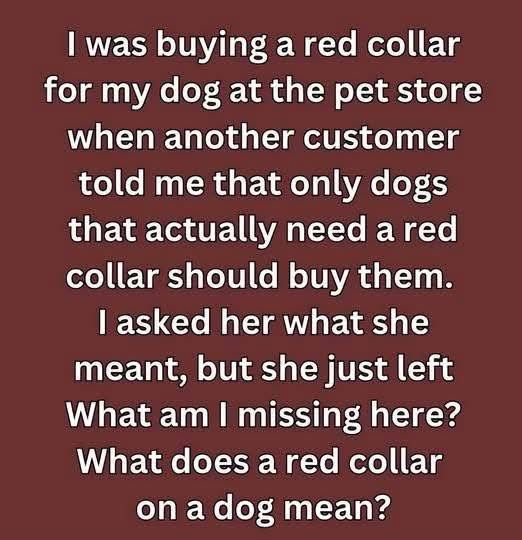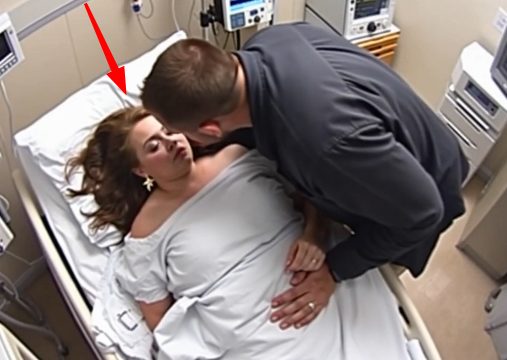As pet owners and dog lovers, many of us are used to picking up on the signals our dogs give through their behavior, whether it’s a wagging tail, excited bark, or playful jump. However, there’s another subtle cue that often gets overlooked but carries an important message—the color of a dog’s collar.

While some people might assume a collar color is simply a style choice or a reflection of the owner’s taste, there’s often more to it. Specifically, a red collar is not just for fashion—it serves as a visual warning that the dog wearing it may need extra space, may not be comfortable around strangers or other animals, and might react unpredictably if approached without caution. This color-based signaling system is increasingly used among dog owners, trainers, and animal behaviorists to help communicate important information about a dog’s temperament and needs. Historically, collar colors have served various communication purposes. For instance, green collars are often used to signal that a dog is friendly and approachable, yellow collars may indicate that a dog is still in training or needs a calm approach, and red collars are generally used to warn that the dog may be anxious, reactive, or even aggressive in certain situations.
These color cues help reduce the risk of misunderstandings and support safer, more respectful interactions between dogs and humans. Research has shown that color-coded collars can be an effective tool in managing social interactions for dogs that are sensitive or easily overstimulated. The use of red, in particular, is significant because it naturally grabs attention and conveys a sense of caution—just as it does in traffic lights or warning signs. When someone sees a dog wearing a red collar, it should act as a prompt to slow down, avoid direct contact, and assess the situation before moving closer. This awareness helps protect both the dog wearing the red collar and the people or animals around them. There are several reasons a dog might wear a red collar.
The dog may have experienced past trauma, making it fearful or reactive. It might be in the process of behavioral training or have a medical condition that affects its comfort around others. In some cases, the red collar simply reflects the owner’s desire to proactively warn others that their dog is not comfortable with strangers or that it needs to be approached with extra care. Understanding these possibilities can help you respond appropriately when you encounter a dog with a red collar.
If you see a dog wearing a red collar, the most important thing you can do is be cautious. Avoid running up to pet the dog or letting your own dog approach without checking first. Instead, maintain a respectful distance and observe the dog’s body language. Look for cues such as relaxed posture and a gentle wag of the tail that may indicate the dog is calm. On the other hand, signs like a stiff body, flattened ears, or baring of teeth should be taken seriously as signs that the dog is feeling threatened or defensive. In any situation, it’s always a good idea to speak with the dog’s owner. A quick conversation can give you insight into the dog’s behavior, triggers, and how best to interact—or whether you should interact at all. This not only keeps you safe but also respects the dog’s comfort zone. If you are walking your own dog and come across a dog with a red collar, it’s especially important to control your pet’s behavior. Avoid allowing your dog to approach or sniff the red-collared dog unless the owner gives you clear permission. Training your dog to remain calm and to listen to your commands during these interactions can make a big difference in maintaining a peaceful encounter. Raising awareness about red collars is essential in building a more considerate and informed pet-owning community. Sharing this knowledge with fellow pet owners, friends, or even through social media can help prevent accidents and ensure that dogs who need space are given the room they require. In conclusion, a red collar on a dog is not just a fashion statement—it is a meaningful signal that the dog may need space, understanding, and a bit of extra caution. By recognizing this, watching for body language cues, speaking with the dog’s owner, properly managing your own pet, and helping others understand what red collars mean, you play a part in creating safer and more compassionate environments for all dogs and their humans.





